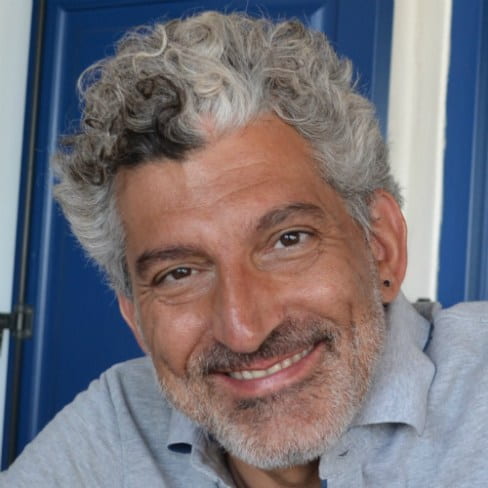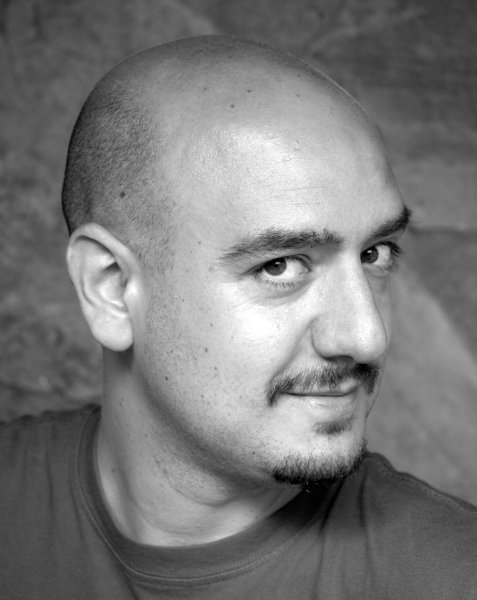Coding Natural Behaviors with Cortical Ensembles
Nicholas G. Hatsopoulos
Professor of Organismal Biology and Anatomy, Professor of Neuroscience Institute, Committee on Computational Neuroscience
Abstract
The language of the brain is natural behavior as has been stated in a recent paper. After all, the brain evolved to promote the survival of animals in their natural environments which depends on the brain to help guide the necessary natural behaviors. This is so obvious from a biological perspective and yet most researchers have often relied on artificial behavioral tasks in animals that are often restrained and constrained to limited behaviors. Over the past few years, we have attempted to understand how motor and somatosensory cortical areas of the brain process information during natural behaviors such as feeding, prey capture, and sleep. I will briefly describe our efforts to decode tongue shape during feeding from large motor cortical populations. I will also discuss work examining single neuron encoding of arm movements during prey capture using wireless cortical recordings. Finally, as part of a large team of researchers, I will present our efforts to develop more natural brain-machine interfaces in human participants.
Bio
Nicholas G. “Nicho” Hatsopoulos, Ph.D. is currently a Professor at the University of Chicago. Dr. Hatsopoulos was also Chairman of the Computational Neuroscience graduate program from 2008-2015. He is currently running a laboratory with graduate students, postdoctoral fellows, and technicians, funded in part by the National Institutes of Health. From January 1998 to December 2001, Dr. Hatsopoulos was an Assistant Professor of Research in the Department of Neuroscience at Brown University. Dr. Hatsopoulos completed two postdoctoral research fellowships, one in the Department of Neuroscience at Brown University and the other in the Computational Neuroscience Program at the California Institute of Technology.
Dr. Hatsopoulos completed his B.A. in Physics from Williams College in 1984, his M.S. in Psychology in 1991 and his Ph.D. in Cognitive Science from Brown University in 1992.
In 2001, he co-founded a company, Cyberkinetics Neurotechnology Systems, which took the basic scientific research he and his colleagues conducted to develop neural prosthesis technology to assist people with severe motor disabilities.
His research focuses on the neural basis of motor control and learning. He is investigating what features of motor behavior are encoded and how this information is represented in the collective activity of neuronal ensembles in the motor cortex. He is also interested in how these representations change as motor learning occurs. To answer these questions, the electrical discharge of many motor cortical neurons is simultaneously recorded using multi-electrode arrays and correlated with motor behavior. The encoding properties of individual motor cortical neurons are being studied to determine how these single cell properties relate to higher-order representations involving groups of neurons. The possibility that changes in functional connectivity among neurons may occur during motor learning is also being explored.


Predicting the content of ongoing thoughts with functional brain imaging data
Monica Rosenberg
Assistant Professor, Department of Psychology
Abstract
We spend a large part of our lives mind wandering. When we do so, our thoughts can vary widely, ranging from positive to negative and focused on ourselves vs. others and the future vs. the past. How does the brain give rise to these richly varying internal experiences? In this talk, I will show that brain networks measured with functional magnetic resonance imaging (fMRI) can help us understand how people's minds wander. In particular, I will demonstrate that functional brain network dynamics predict the content of people's ongoing thought in the absence of any explicit task. These results suggest that brain dynamics robustly encode everyday mental state dynamics.
Bio
Monica Rosenberg joined the faculty as a Assistant Professor in 2019. Her research explores how we pay attention, and how insights from attention research can help improve focus. Dr. Rosenberg completed her PhD and postdoctoral work in the Department of Psychology at Yale University after earning her undergraduate degree in cognitive neuroscience at Brown University.
A primary focus of Dr. Rosenberg’s work has been what we can learn about a person from their unique patterns of brain activity, and what this can tell us about the nature of the brain and mind. In particular, she builds models that predict individual differences in attention and cognition from functional neuroimaging data. This work has revealed, for example, that data collected while a person is simply resting in an MRI scanner (and not completing any task at all) can be used to predict aspects of their behavior, including how well they pay attention and remember information. Dr. Rosenberg’s work also uses behavioral, neuroimaging, and machine learning techniques to investigate how attention fluctuates over time, changes across development, and interacts with the rest of the mind.
Unraveling the Origin of Cosmic Rays with Computer Simulations
Damiano Caprioli
Associate Professor, Department of Astronomy and Astrophysics; Enrico Fermi Institute; and the College
Abstract
The origin of extraterrestrial energetic particles (usually referred to as “cosmic rays”) has puzzled scientists since their discovery in 1912. The debate over their origin has involved prominent physicists (Nobel laureates Compton, Millikan, Jeans, Fermi, among others) and has stretched over more than a century. Only in the last few years a combination of novel high-energy telescopes and unprecedented supercomputer simulations allowed us to associate Galactic cosmic rays to supernova remnants, the relic of powerful stellar explosions. Nevertheless, the quest for unveiling the origin of the highest-energy cosmic rays, which are of extra-galactic origin, is still ongoing and represents one of the greatest challenges in modern Astrophysics.
Bio
Dr. Caprioli is a theoretical astrophysicists, an Associate Professor in the Department of Astronomy and Astrophysics and in the E. Fermi Institute at the University of Chicago. He received his PhD in 2009 from the Scuola Normale Superiore di Pisa (Italy) and was a post-doc at INAF-Arcetri (Italy) and Princeton University (USA). He is the recipient of the Shakti P. Duggal Award (2015) and of the Rita Levi Montalcini Fellowship (2014) for young Researchers.
Dr. Caprioli is interested in high-energy astrophysical phenomena and in particular the non-thermal nature of astrophysical plasmas. He uses both analytical and numerical (particle-in-cells simulations) to study how particles can be accelerated to the highest energies in the universe. Energetic particles, detected at Earth as cosmic rays, are also responsible for the production of non-thermal radiation from radio to gamma-rays, which provides us with a prominent way of testing their sources. Such physical mechanisms are at the core of the most violent phenomena in the universe, such as stellar explosions (novae, supernovae, kilonovae, gamma-ray bursts), supernova remnants, active galactic nuclei and their jets, pulsars, intracluster shocks, and more. He is also interested in the role of non-thermal particles and magnetic fields in galaxy evolution and in other ways of testing particle acceleration, such as laboratory plasma experiments and in-situ measurements in the heliosphere.
